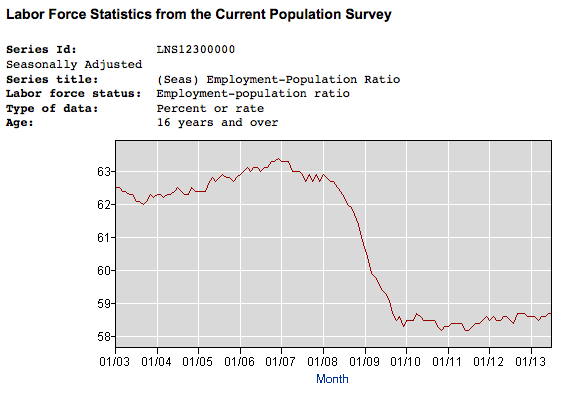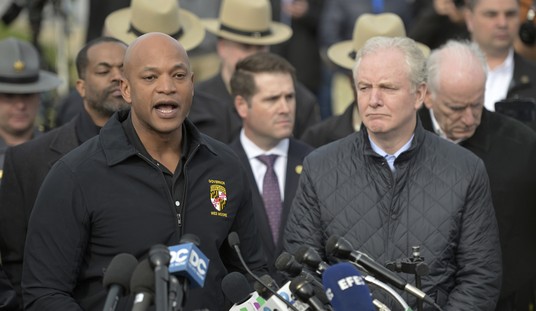For July, some of the top-line employment numbers actually look pretty good — and when I say “good,” I do mean that in the most relative sense of the word, because nothing going on here would ever be classified as anything more than piddling near-stagnation in a time of actual substantive economic growth — but let’s not be too hasty. Via Bloomberg:
Employers added fewer workers than anticipated in July even as the U.S. jobless rate dropped to 7.4 percent, indicating uneven progress in the labor market.
The 162,000 increase in payrolls last month was the smallest in four months and followed a revised 188,000 rise in June that was less than initially estimated, Labor Department figures showed today in Washington. The median forecast of 93 economists surveyed by Bloomberg called for a 185,000 gain. Workers spent fewer hours on the job and hourly earnings fell for the first time since October. …
The unemployment rate was forecast to drop to 7.5 percent from 7.6 percent, according to the Bloomberg survey median.
The unemployment rate actually dropped to 7.4 percent? Huzzah! …Wait, hold on a second. Let’s check in with what happened to the labor force participation rate, shall we?
The labor participation rate dropped to 63.4 percent from 63.5 percent.
Uh oh.
If labor force participation were back at July 2012 level, the unemployment rate would 7.8%; 10.7% at Jan. 2009 level
— James Pethokoukis (@JimPethokoukis) August 2, 2013
That’s right — the unemployment rate actually dropped while number of people participating in the workforce also dropped. I can hardly wait for the White House to spin this as “encouraging news” and signs of the economy’s progress, even though the economy only grew by a truly pathetic 1.7 percent in the second quarter of the year:
But the bad news is this: The better-than-expected second-quarter number came at the expense of a downward revision to estimates to the first part of the year, from 1.8 percent to 1.1 percent. Add in anemic growth (at only an 0.1 percent pace) in the fourth quarter of 2012, and we’ve now faced nine months of an expansion at a bit less than a 1 percent annual rate. Every two steps forward for growth seems to be accompanied by a step and a half back.
It would be one thing if that kind of slow growth was happening in a time of full employment, when the economy was basically sound. But with 7.6 percent unemployment, the nation could really use a few quarters in a row of 4, 5 or 6 percent growth to get us back to where people can really be pleased with the economy. It’s not an outlandish view; that’s exactly what happened in the early 1980s, in the aftermath of the last very deep recession.
What’s to celebrate, really? The fact that we’re not in a technical recession? That’s something, I suppose, if you’ve resolved yourself to this era of virtual stagnation — but even that might only be a matter of time, ugh.
Most troubling things to me about this ho-hum jobs report: decline in hourly earnings by 2 cents and decline in workweek by by .1 hrs.
— Ben White (@morningmoneyben) August 2, 2013









Join the conversation as a VIP Member